Look out the right pricing window
Why is the first step in the price pyramid important, and what factors must be considered to determine a competitive and profitable price?
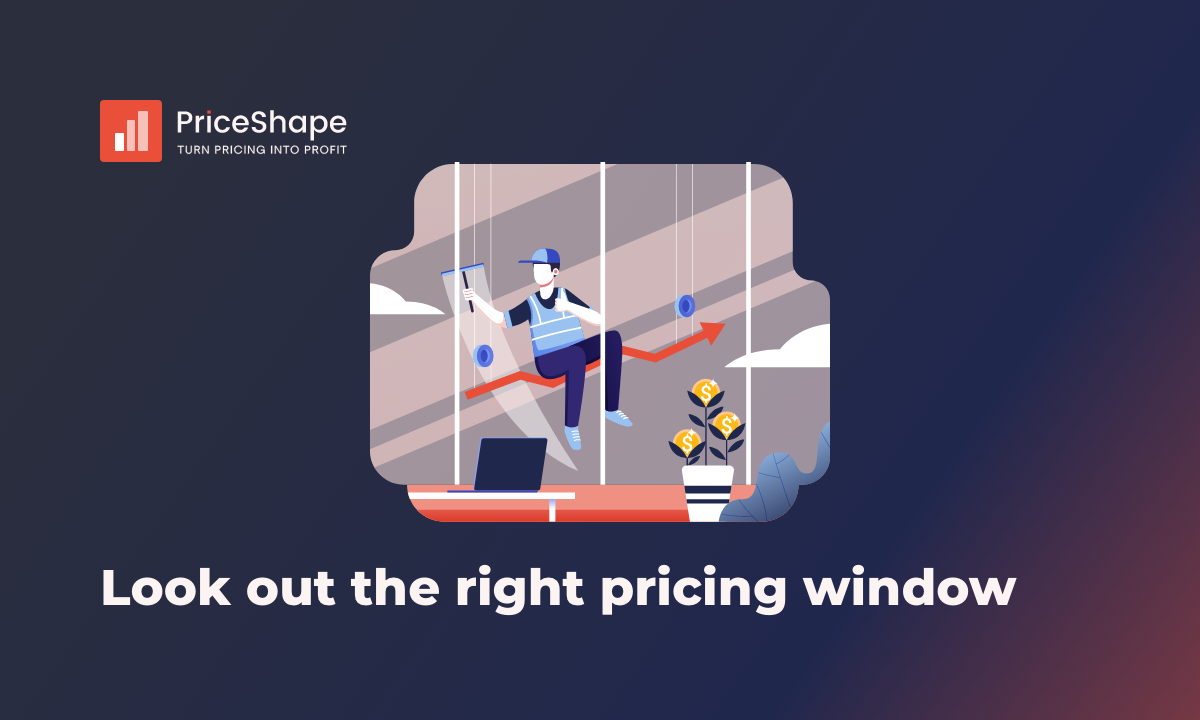
When deciding what price your products must have, several factors are essential. One of the tools that can be used helping to select this is the pricing pyramid.
The pricing pyramid consists of 3 steps: Define the pricing window, define your competitors, and what is creating the value. In this blog post, I will focus on the first step, why this step is essential, and how PriceShape can help implement this step quickly in your pricing strategies.
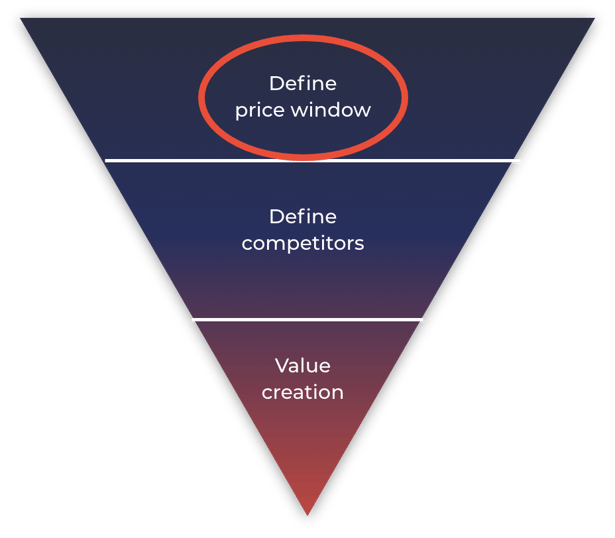
What is the pricing window?
To find the right pricing window, knowing the “Price Floor” and the “Price Ceiling” is crucial since the pricing window is in between these two.
The pricing window refers to when a product or service is priced at a certain level before a price change. It is the timeframe where a company or business can evaluate the effectiveness of their current pricing strategy and decide whether to adjust the prices to better align with market demand or internal objectives. The length of the pricing window can vary depending on the industry. When having an e-commerce business, the pricing window changes multiple times a day. Changing prices and keeping up with the market can be difficult and time-consuming. Companies make data-driven decisions to optimize their pricing strategies by monitoring sales data, consumer behavior, and market trends during the pricing window.
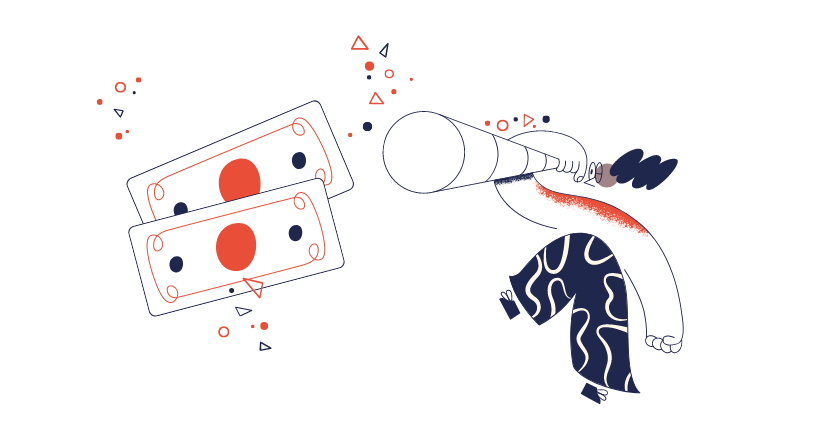
Why is it important to define your product's price window?
The price window provides insight into the range of prices consumers are willing to pay for the product, which helps ensure that the price is not too high or too low. Businesses can determine a competitive and profitable price when considering all factors in the pricing window. Failure to view any of these factors could result in an overpriced or underpriced product, leading to lost sales, reduced profitability, and damage to the brand's reputation.
Defining your products’ price window is essential when setting your overall price strategies and staying profitable. When that is said, there are many different ways of determining your price window to get the right price.
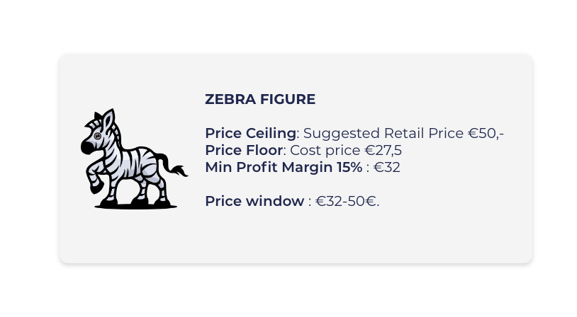
Price Floor
As mentioned above, is the pricing window defined by finding the price floor and the price ceiling. The price floor is the lowest possible price a seller is willing to accept for a product or service. It represents the minimum amount a seller is willing to receive in exchange for their product, usually based on factors such as production costs, desired profit margins, and competitive pricing in the market. In some cases, a price floor may be set by government regulations or industry standards to prevent prices from dropping too low and causing harm to the market or the sellers.
At PriceShape, our clients often define their Price Floor as the minimum profit margin acceptable for the product(s). This is also usually what marketers and pricing analysts work with from a theoretical perspective.
Cost Price
The minimum profit is considered when finding the price floor, meaning looking into the cost price. It differs from how companies define their cost price.
When looking at the cost price, it is essential to consider all the expenses associated with producing and selling a product or service, including direct costs such as raw materials, labor, and manufacturing overhead, as well as indirect costs such as rent, utilities, and marketing expenses. It is essential to clearly understand the cost structure to set the right price and ensure profitability. Furthermore, it is crucial to regularly review and update cost calculations to account for changes in the market, production processes, and other variables that may impact the cost of goods sold. It is, therefore, crucial to have an overall policy for what to include in these calculations. Essentially, the cost price represents the total expenses incurred by a business to bring a product to market and is a key factor in determining the overall profitability of the product.
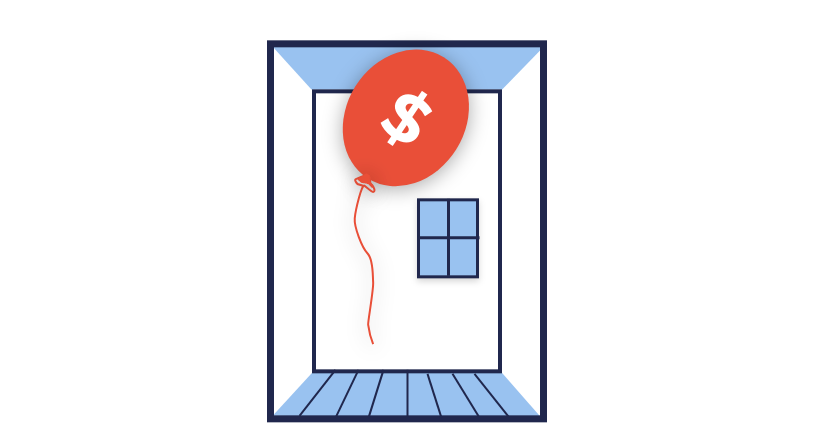
Price Ceiling
The price ceiling, on the other hand, represents the maximum price that the market will bear for the product or service based on the perceived value and competition. It is the maximum price a customer will pay for a product. If a product is priced above this ceiling, the customer will likely look for alternative products that offer similar features at a lower price. In a price window strategy, the price ceiling ensures the products remain competitive and affordable for its target customers.
It is crucial to conduct market research and analyze the pricing strategies of competitors in the industry to determine the maximum price the target audience is willing to pay when defining the price ceiling. If the price exceeds the ceiling, customers may perceive the product or service as overpriced, reducing demand and sales. On the other hand, pricing below the ceiling may lead to missed profit opportunities. Therefore, understanding the price ceiling can help businesses optimize their pricing strategy and maximize their revenue.
A price ceiling is often used to prevent market manipulation or ensure that certain products remain affordable. Companies that exceed the price ceiling risk losing market share to competitors or facing regulatory action.
Suggested Retail Price (MSRP)
Manufacturers suggested retail price can be used as a reference point when determining the price ceiling for a product. It represents the price the manufacturer or supplier recommends for retailers to sell the product to consumers.
A suggested retail price is the price a manufacturer recommends a retailer charges for a particular product. The manufacturer usually indicates this price to ensure that the product is sold at a price that allows both the manufacturer and the retailer to profit. However, the retailer is not obligated to follow the suggested retail price and may choose to sell the product at a higher or lower price.
Using the suggested retail price gives the retailer an idea of whether the pricing ceiling is feasible and competitive. Using the suggested retail price will allow you to work with campaigns and see your competitors' deviation from you in PriceShape. Therefore, adding your products to the data feed is vital.
Use PriceShape to your advantage
When working with any pricing/optimization tool, it is essential to remember that data quality is key to achieving success. The more accurate the data and how much the different attributes have been worked with, the more successful the results will be. Therefore, including all available data and attributes will continually position you in the best position with the use of dynamic pricing.
Overall, setting the best price for your products requires a balance between your costs, your target customer's preferences, and your business goals. A price window strategy can help you find that balance and set a price that maximizes your profits while still attracting customers, hence the best price for your products.
I'd like you to stay tuned for the next blog post, where we will dive into the last step in the pricing pyramid: Value Creation.

